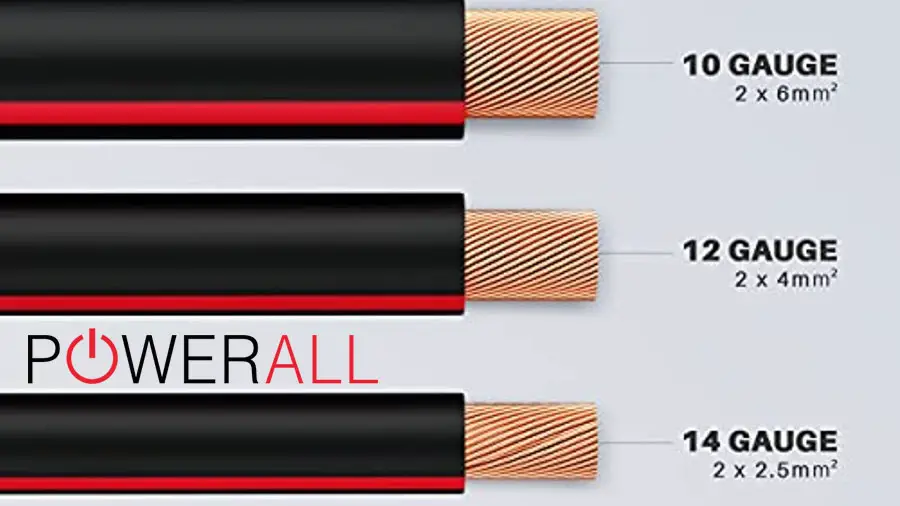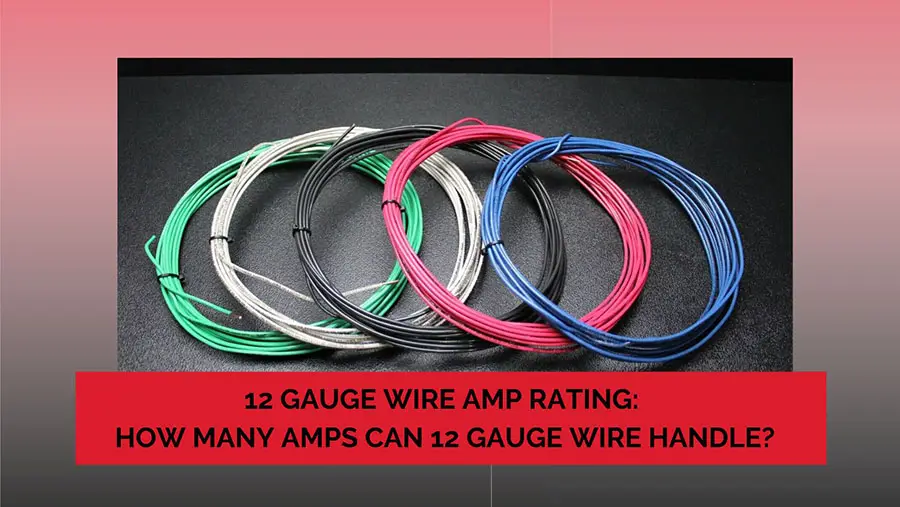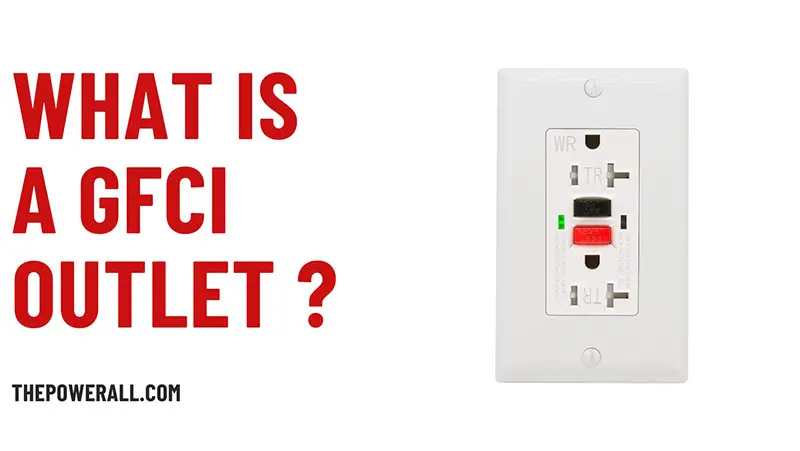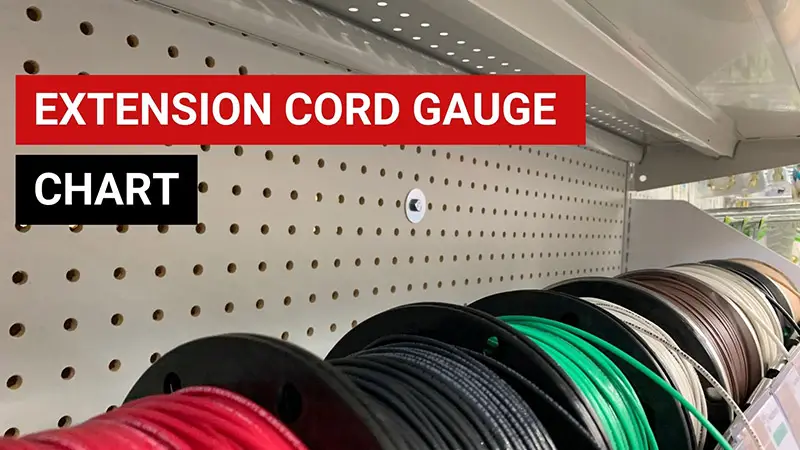Amp rating or ampere rating is the maximum current to every fuse, and understanding the 12 gauge wire amps is very crucial because most households have this type of wire in their electrical circuit.
12 gauge wires that are solid copper conductors are usually used in the kitchen, bathroom, and air conditioners. Therefore, comprehending this type of electric wire’s amperage capacities will help users meet safety standards and avoid current overload leading to electrical fires in their electrical systems.
12 AWG Wire Diameter
Before finding the 12 AWG amperage ratings, we need to know its wire diameter.
Based on how many individual wires there are and their cross-section, you can determine most of the AWG wire diameter. When it comes to 12 AWG wire, you need to consider the stranded wire, which has plastic insulation.
The thickness of the 12 gauge wire is 1.053 mm ( approximately 0.08 inches). That value is very similar between solid copper 12 gauge wires and copper 12 gauge stranded wires.
Cross-Section Of 12 AWG Wire (Mm2)
Like the AWG wire diameter, the cross-section of a solid wire is also determined by the cross-section of individual wires and their quantity.
The cross-sectional area of 12 AWG is 3.31 mm2, as measured in millimeters squared. Surface area is measured in square millimeters, such as these.
As with the metric system, circles are measured in kcmil units in the United States. A kilo-circular mil is abbreviated as a kcmil. Approximately half a millimeter squared is 1 kcmil (0.5067 mm2). Therefore, the cross-sectional area of a wire with a gauge of 12 is 6.53 kcmil.
12 AWG Total Turns Of Wire Capacity
Every single AWG wire is constructed of a series of smaller individual cables. These thin wires wind their way through the cable or wire in a spiral pattern. Knowing how many spirals are in a 12 AWG cable is crucial for various purposes.
12.4 turns of wire are packed into one inch of 12 gauge wire, whereas 4.87 turns of wire are packed into one centimeter (centimeter).
Wire Resistance Of 12 AWG Wire (Ohms)
The resistance of each wire must be taken into consideration. Ohm (Ω) is used to measure electrical resistance.
12 AWG copper wire has a resistance of 5.211 milliohms per meter (m/m). This is equivalent to 1.588 milliohms per foot (m/ft).
Copper wires are about 40% more efficient than aluminum wires in terms of resistance.
As a result, copper wires of the same size transport more amps than aluminum wires. Furthermore, since it has less resistance, 12 AWG copper wires are more resistant to temperature generation than 12 AWG aluminum cables.
What Is The 12 Gauge Wire Amp Rating?
It is the ideal wire to use for 20 amp services, with a capacity of 25A at a median temperature of 75°C (of course, you must account for the 80% NEC requirement, as we explain later). The maximum level of amps that NEC allows for it to be protected at 20 amps, except for motor loads.
12 Gauge Wire Amps
What is the amperage rating of the 12 AWG wire? This is the significant specifications for all wires.
The ability of a 12 gauge wire to transmit current is determined by the maximum of the wire’s temperature rating. 12 gauge cable can draw:
- At 60°C, 20 amps.
- At 75°C, 25 amps.
- At 90°C, 30 amps.
The average ampacity of a wire measured at 75 degrees Celsius is often used for sizing purposes. It follows that the 12 AWG cable can carry 25A of current.
Rules When Considering Amp
In most applications, Ampacity specified for 60°C/140°F temperature (20 Amps max.) is used for safety reasons. However, different surface temperatures may be acceptable depending on the scenario.
However, there are a few extra factors to consider before fully adopting these Ampacity numbers.
80% Rule
This rule is issued by the National Electric Code (NEC). According to this criterion, each wire used in a circuit shall carry no more than 80% of the total amperage.
According to this rule, no single wire may carry more than 80% of a circuit’s total current. This equates to a 20-amp circuit when using a 25-ampere, 12-gauge wire.
10% Rule
This rule is an additional rule and relates to wire length. It is applied to reduce energy losses – for every 50 feet (15m) of wire, and Ampacity is reduced by 10%.
In practice, this means that the Ampacity of a 12 gauge 150-foot long wire at 60°C/140°F is 12.3 Amps (A).
Comparison: 10 Gauge Wire vs. 12 Gauge Wire vs 14 Gauge Wire

When it comes to wire comparison, we usually consider diameter, cross-section, and amp rating among 3 types to choose 14-, 12- or 10-gauge wire:
- Diameter:
The 12 gauge wire diameter is 2.053 mm. The diameter of the 14 AWG wire (1,628mm) is approximately 21% smaller than that of the 12 AWG wire. And the diameter of the 12 AWG wire is 26% smaller than that of the larger 10 AWG wire, which has a 2.588 mm diameter.
- Cross-Section:
12 AWG wire which has an area of 3.31 mm2. In terms of area, the 12 AWG wire is 37% larger than the 14 AWG wire with a 2.08 mm2 cross-section.
In comparison to the larger 10 AWG, which has a 5.26 mm2 cross-section, the 12 AWG wire is 59% smaller in area.
- Amp Rating:
We’ll use the 80% rule from the NEC as a standard for comparing amp ratings.
| Type of cables | Amp Rating (A) | amp wire size |
| 10 AWG wire | 35 | 28 |
| 12 AWG wire | 25 | 20 |
| 14 AWG wire | 20 | 16 |
According to the data in the table, 12 AWG wire is 29% less powerful than 10 AWG wire. In a comparison between 12 AWG and 14 AWG wire, the former has a 25% higher Ampacity (current carrying capacity) than the latter.
FAQs About 12 Gauge Wire Amp Rating
How far can 20 amps be carried by 12 gauge wire?
On a 20 amp circuit, a 12 gauge wire can transmit a current of 20 amps, approximately 400 feet. A 12 gauge cable, however, can transport 20 amps over 50 feet with such a 3.33 % power loss when used as an electrical cord.
Is a 12-gauge wire capable of carrying 25 amps?
A 12 gauge cable can carry 25 amps in motor applications alone. Normally, the average maximum rating that a 12 gauge wiring can safely bear is 20 amps.
Can A 12-Gauge Wire Handle 30 Amps?
No, a 12 gauge cable is unable to carry 30 amps. A load of 30 amps should never be handled by a 12 gauge cable. It would be better if you did not connect a 30 amp load to a 12 gauge cable.
What Can I Run Off A 30-Amp Circuit Breaker?
Some of the power-demanding appliances and portable devices in a typical RV have 30 amp electrical equipment. We can see a 30-amp breaker (even larger breaker) in the electric water heater, air conditioner, oven, coffee machine, hair dryer, electric skillet, space heaters, and toaster. The secret to living on 30 amps is never to exceed the amperage of a single circuit and to never surpass a total of 30 amps at any given moment.
Conclusion
In short, the 12 Gauge Wire Amp Rating is 25A at a median temperature of 75°C. It is the optimum wire for 20 amp services. And when using the 12 GWA wire, you should get the gist of the above information to ensure safety in your electrical systems. Besides, understanding the difference between 3 types of wire (2 AWG vs. 14 AWG vs. 10 AWG) and circuit Ampacity is necessary to choose the right copper cables for your needs.
See also: 10/2 Or 10/3 Wire For Air Conditioner










0 Comments